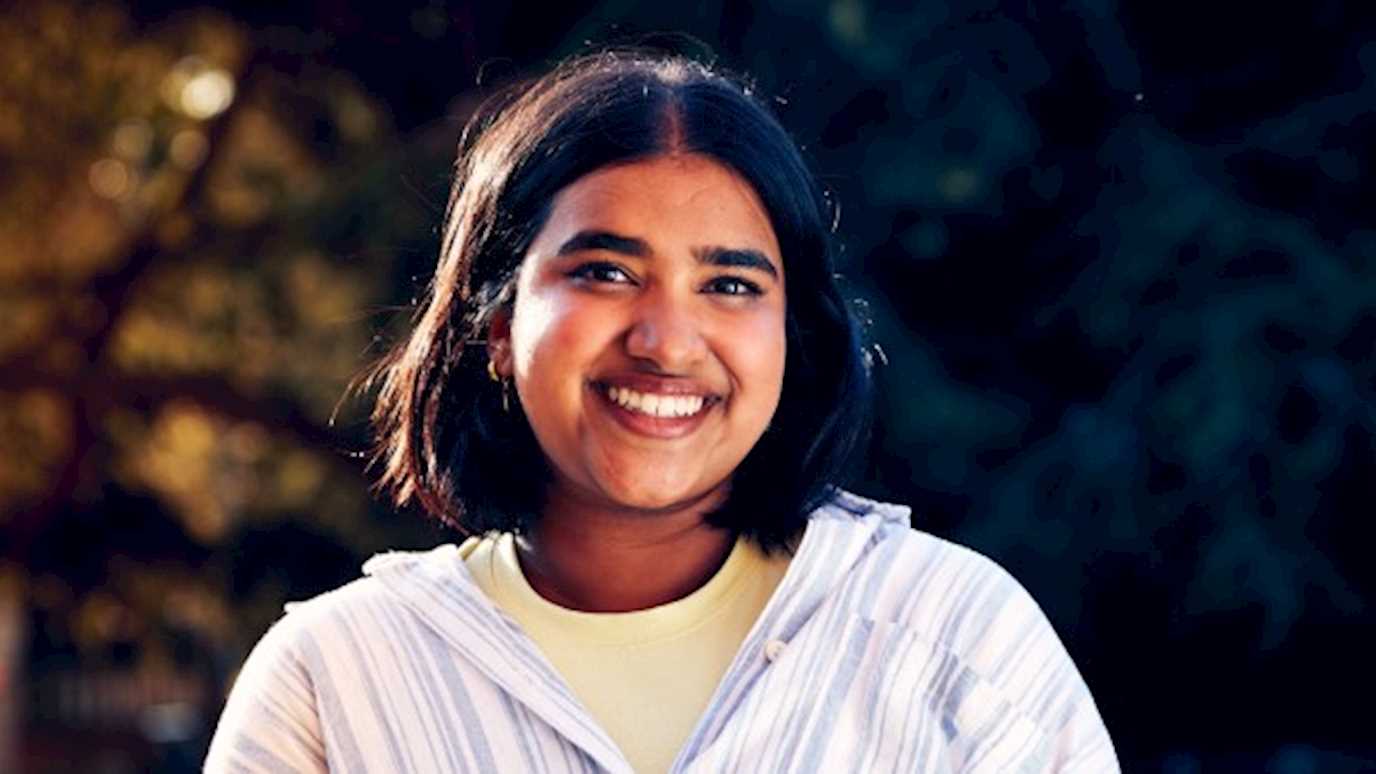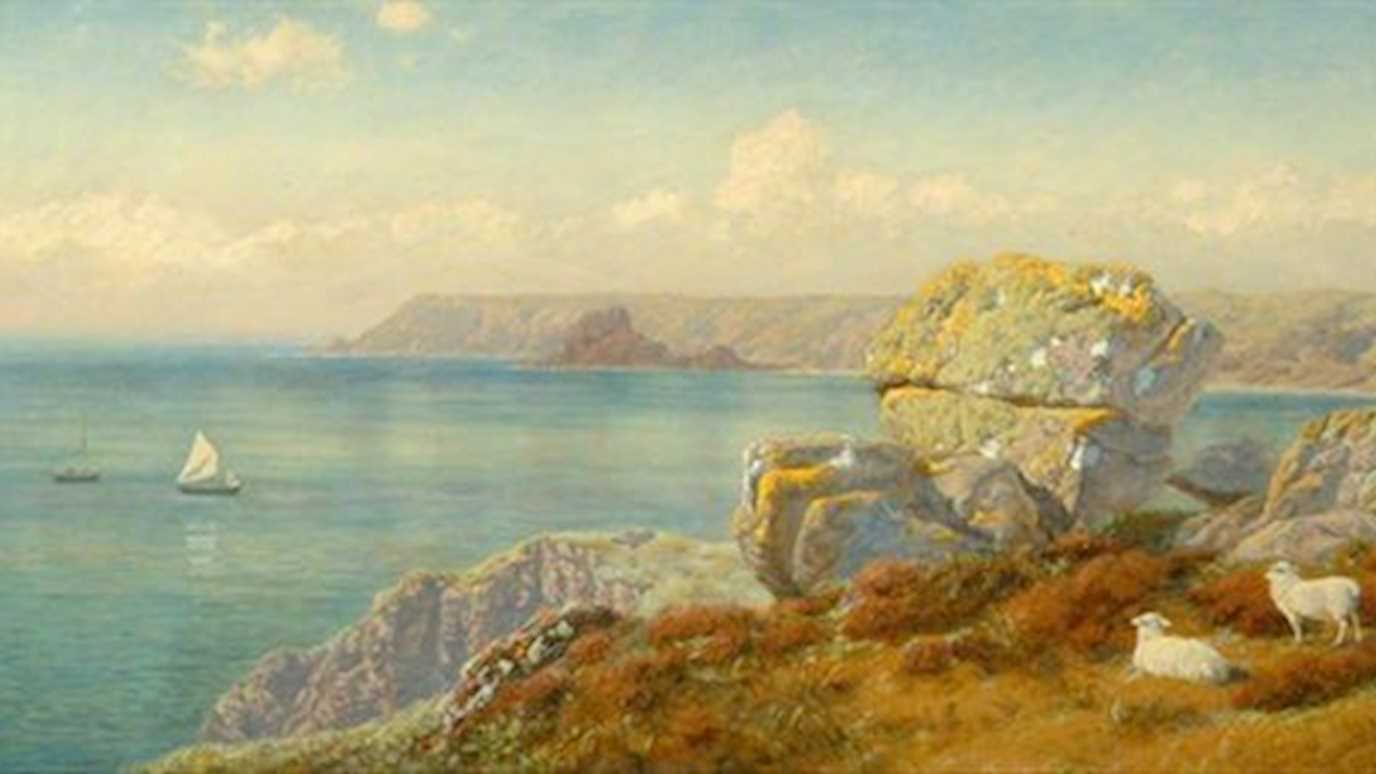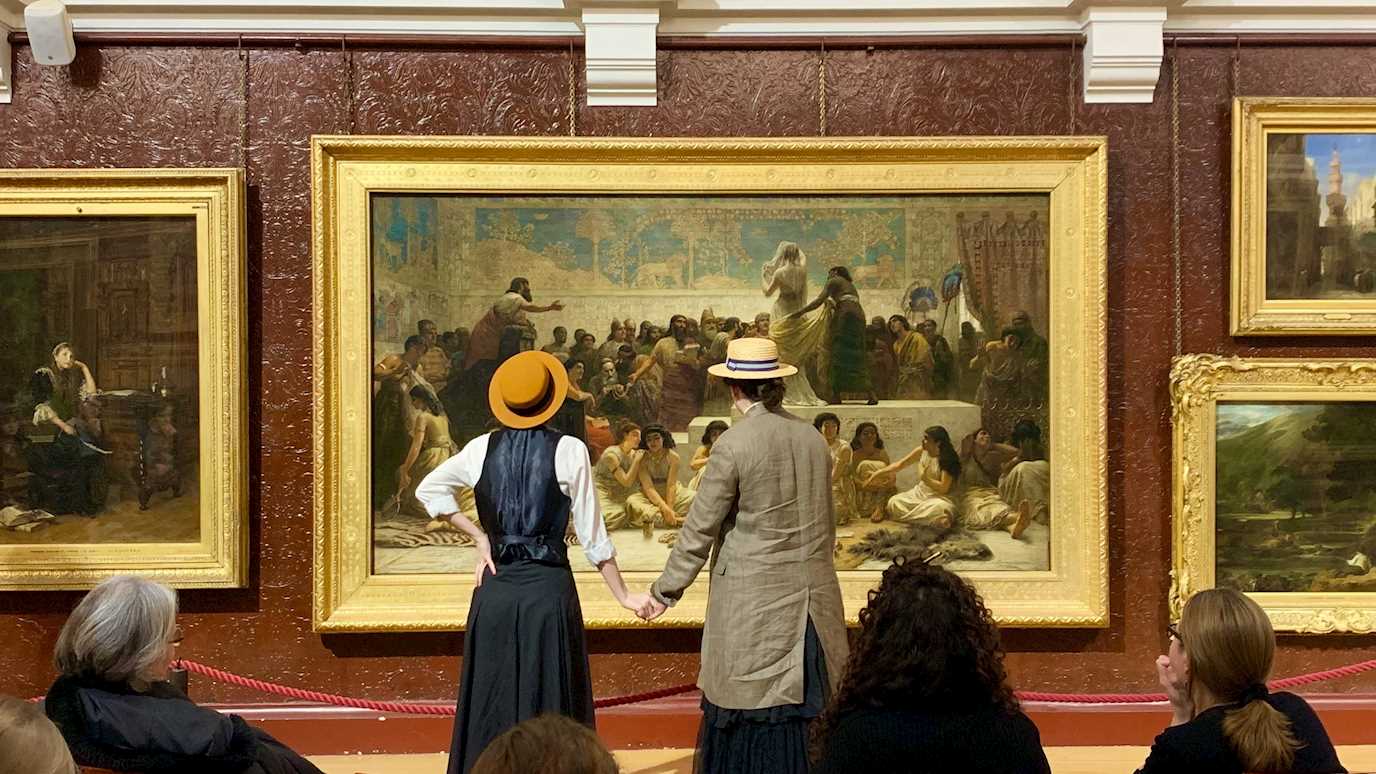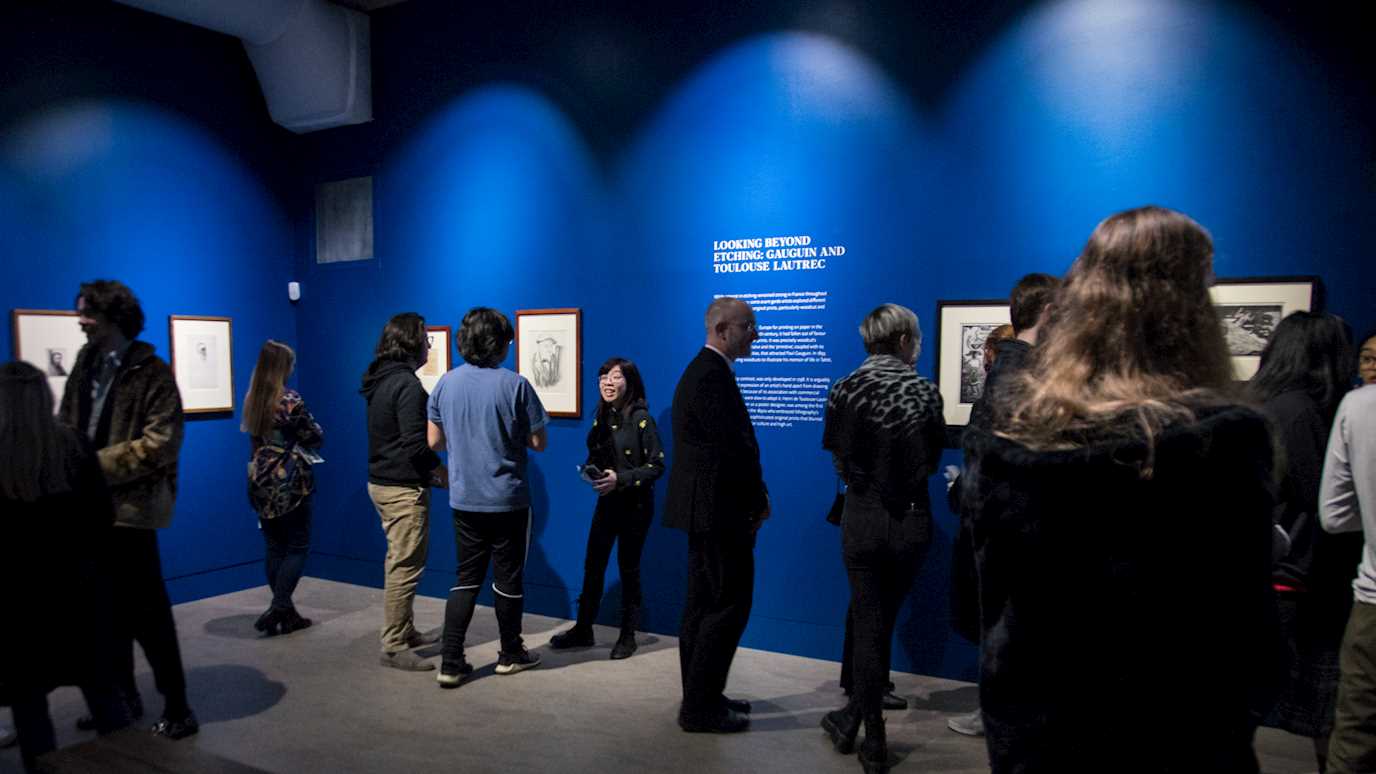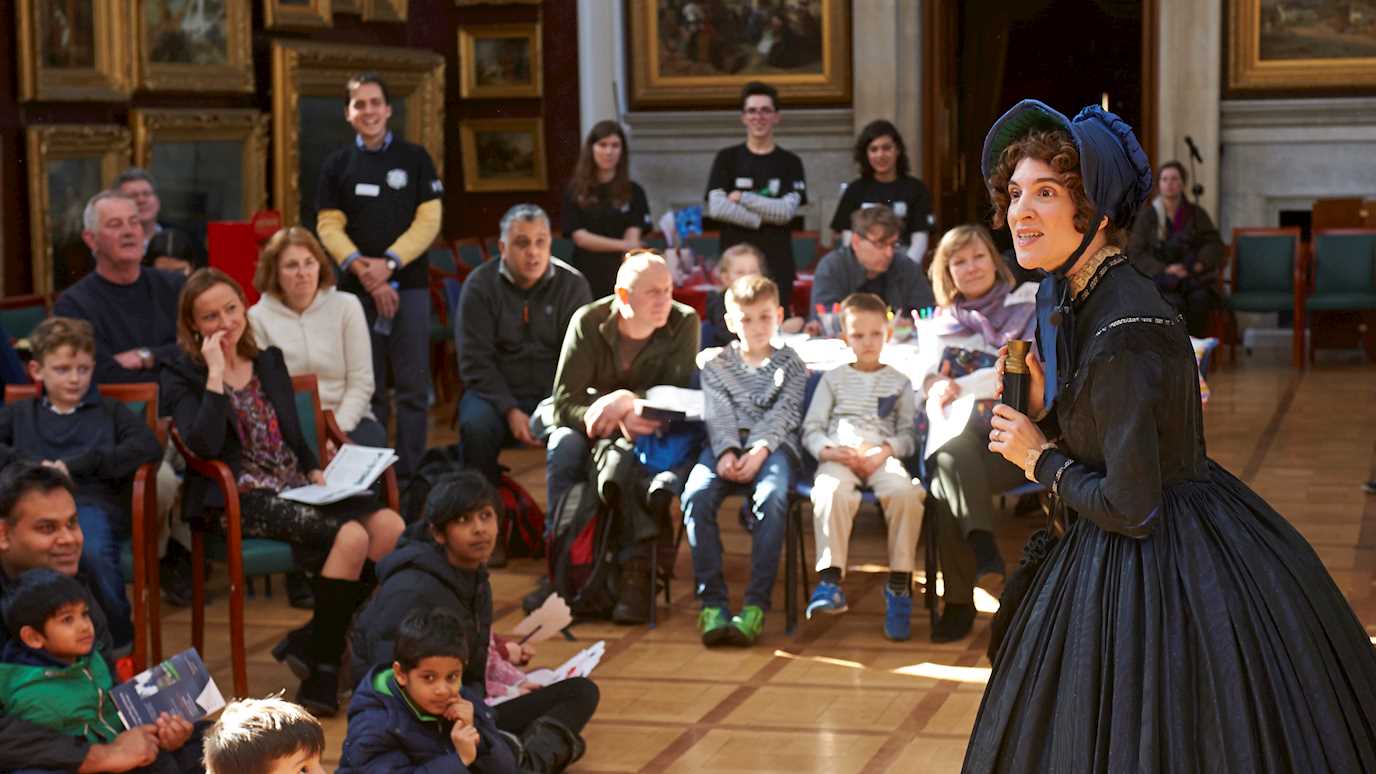The University’s art collection includes world-class paintings, sculptures, prints, drawings and watercolours including works by William Powell Frith, John Everett Millais and Edward Burne-Jones. Recent additions to the collection include works by Augustus John and Graham Sutherland.
At the core of the collection are the legacies of two Victorian collectors: the entrepreneur Thomas Holloway and the artist Christiana Herringham. Their collections have been enhanced through additional gifts, acquisitions and commissions which span from the 17th century to the present day. The Thomas Holloway collection of Victorian paintings are housed in our stunning Grade 1 listed Picture Gallery.
The Collectors
Thomas Holloway (1800-1883)
Born in 1800, Thomas Holloway made his name in business with just two products: pills and ointments. He claimed that the pills could cure anything, however, we now know that they contained no medicinal ingredients, just natural substances like ginger, castor oil and soap. He was one of the earliest advertising moguls, pioneering the use of methods such as advertising in newspapers, creating collectibles and erecting billboards some as far away as Niagara Falls and the Pyramids of Giza. Through these methods he amassed a huge fortune. He said that he could make money quicker than he could spend it.
Having created a hugely successful global business, and with no children from his marriage to Jane Holloway, he set about leaving legacies to the nation. His first project was to build a sanatorium for the care of mental health patients in Virginia Water, Surrey. Even before that that was finished he decided to use more of his wealth to build a college for women who wanted a university–level education.
When Thomas Holloway first built this women’s college he did not envisage including an art gallery. However, when his brother-in-law visited Vassar College, in New York State, then the world’s leading college for women, he reported back that they had a superb collection of art. This inspired Holloway to start buying paintings to form a collection for his students in 1881. It is likely that this was the first collection created in Britain specifically for female viewers.
Holloway’s creation of the collection was extraordinary in many ways. He was 81 years old when he began making his purchases and all his buying was done within just two years. In all but two cases he bought from Christie’s auction house. He rooted out good bargains but if there was a painting he wanted he was able to use his wealth to buy it. In two cases he broke auction house records in order to secure the paintings he had selected for the collection. He did not go to the auctions himself but sent his brother-in-law to bid for him. He asked him to use pseudonyms to hide his identity as he feared the prices might rise if it was known that Holloway was interested in buying a work.
In total Holloway bought 77 paintings. He bought works by the greatest artists of his day including Turner, Millais and Landseer. Having amassed such a rich collection his architect Henry Crossland was tasked with finding a home for it. As no gallery was included in the original plans Crossland chose to place it in the women’s recreation room where it has stayed ever since the opening of the college in 1886.
The collection certainly impressed Queen Victoria. On the day she came to open the College she wrote in her diary that ‘Royal Holloway had fine specimens of modern art’.
Lady Christiana Herringham (1852- 1929)
When Bedford merged with Royal Holloway in 1985 Lady Herringham’s eclectic private art collection joined the collection that Thomas Holloway bought for his women’s college.
Although now relatively unknown, Christiana Herringham (1852-1929) was a mover and shaker in the Edwardian art world. She was close friends with the art critic Roger Fry (1866-1934) and the artist William Rothstein (1872-1945) as well as being one of the few female artists to receive praise from Walter Sickert (1860-1942) for her translation of a 14th-century Italian treatise on art. Her interest in early Italian art led her to found the Society of Painters in Tempera in 1901. This group spearheaded a revival of the medium used before the discovery of oil paint. She was a skilled artist and painted copies of works by Botticelli (about 1445-1510) and his contemporaries, several of which are on display in the entry to the Picture Gallery.
Herringham fought for other artistic causes too. It was her money which founded The National Art Collection Fund in 1903 to buy works of art for the nation that were at risk of being sold abroad. The charity is now known as The Art Fund and now has over 90,000 members. With William Rothstein she undertook a project to restore Buddhist cave paintings in Ajanta, India and this interest is reflected in the rare Indian miniature paintings which are part of her collection.
Independently wealthy, due to her father’s will, she also used her money to improve the lives of women. She gave money to found scholarships for women going to Newnham College, Cambridge and in 1888 she was one of the founding directors of the Ladies’ Residential Chambers & Co. which built accommodation for ‘educated working women’. Through her close friendship with Millicent Fawcett and her sisters she was heavily involved in the struggle for the vote for women. She was a member of the Artist’s Suffrage League and the managing director of the Women’s Tribune newspaper. Her art collection reflects these interests as it includes a number of paintings by fellow women artists including the Manchester suffragette Annie Swynnerton, who, in 1925, became the first woman to become a member of the Royal Academy since 1768.



